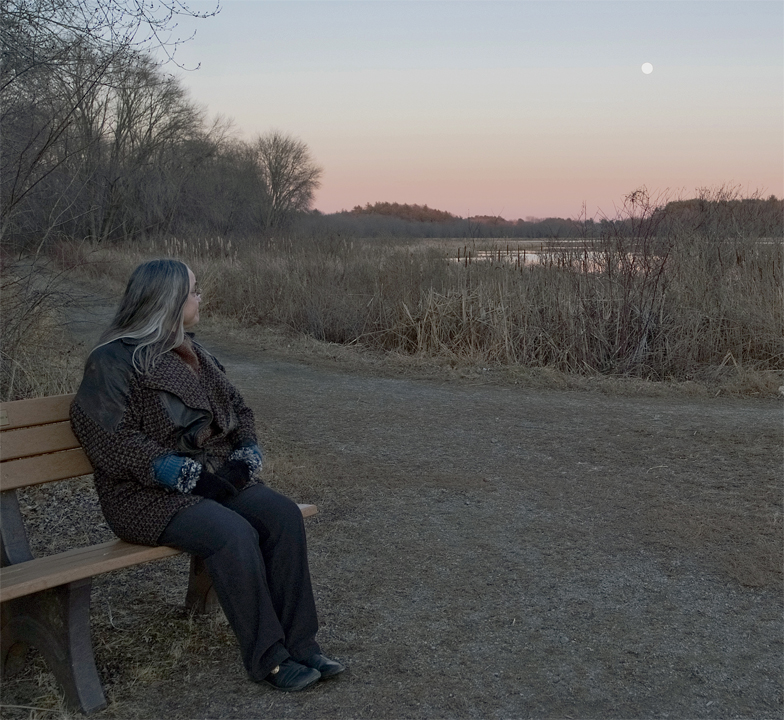Herald, Poet, Auteur: Theódhoros Angelópoulos (1935-2012)
Wednesday, February 29th, 2012These stones that sink into the years, how far will they drag me?
The sea, the sea, who will manage to drain it dry?
I see the hands beckon each dawn to the vulture and the hawk
bound as I am to the rock that pain has made mine,
I see the trees breathe the black serenity of the dead
and then the smiles, frozen in place, of the statues.
— Ghiórghos Seféris, Mythistórema, Part 20
Like many other cultures, mine has funerary customs that are thinly disguised pagan rites. One of them is the mnemósyno: forty days after someone’s death, friends and family get together to reminisce. It has been that long since the death of filmmaker Theódhoros Angelópoulos, whose work I found flawed yet deeply compelling. So this is my mnemósyno for him.
Angelópoulos, killed at 76 in a completely preventable accident while filming the final installment of his latest trilogy, was a director’s director. If you don’t know his name, don’t rush to download his films from Torrent or Hulu. He requires enormous patience and dedication: his films are long (several reach four hours) and he was famous/notorious for unbroken takes that last more than ten minutes and include unapologetic dead time. He was not the only Hellenic director to become internationally famous (Koúndhouros, Kakoyánnis and Ghavrás are familiar names, to non-Americans at least) but he was the one who stayed steadily in the limelight, piling up awards like kilims.
Fellow directors and film critics likened Angelópoulos to Antonioni and Kurosawa, but his true siblings are Tarkovsky and Malick. The three share many attributes: they are masters of oneiric images drenched with nostalgia for lost Edens. Their characters are semi-abstract symbols, their dialogues vestigial: the poetry resides in their stunning images, often coupled with equally haunting music. All three have a powerful affinity for water, and they often use specific colors as emotional or mythical signifiers (for example, the rare flashes of red in Angelópoulos’ The Weeping Meadow; in one instance the color appears on an unraveling scarf that serves as Ariáthne’s thread between two long-persecuted illicit lovers at the moment they part for the final time). Their best films (Malick’s New World, Angelópoulos’ Odysseus’ Gaze) are hypnotic, otherworldly. When their inspiration flickers, their works become ponderous, pretentious to the point of parody – and they have not one atom of humor between them.
Angelópoulos had an additional burden that nevertheless enriched his art: the heavy pieces of beautiful but broken statuary that are the Hellenic legacy. Unlike Malick and Tarkovsky, he’s intensely political and his films are palimpsests of myth and history. Scenes often start in one epoch to dissolve into another – and they are inhabited by characters who are simultaneously everyday people and ancestral archetypes that cast long shadows. His films can be appreciated entirely as aesthetic achievements but for those who know Hellás they are full of echoes and ghosts. His lost Edens are not the innocence of childhood nor prelapsarian wilderness; they’re the lost homes and historic opportunities of his people. His wanderers do not seek to find themselves; they seek once-safe harbors now guarded by fog and barbed wire.
As one example, The Travelling Players at first glance is a slice of life: it depicts the precarious, picaresque existence of a group of wandering actors who go through the provinces in the forties and fifties, playing a pastoral potboiler. However, the film has at least two more layers: the actors, who are an extended family, reenact the tragedy of the Atreides. They also bear witness to the Nazi occupation, the resistance to it, and the devastating civil war that followed it. As another example, Odysseus’ Gaze is the story of a Hellene emigré filmmaker’s quest to discover a lost reel by the Manakis brothers, photographers who pioneered film art in the Balkans and recorded everyday life across ethnicities. It is also an elliptic, allusive odyssey through the region’s past (a time of deep-rooted diaspora communities, extinguished since by resurgent nationalisms) as well as its fragmented present, including the brutal war that dissolved Yugoslavia.
Angelópoulos was sure of himself to the point of obsession and self-indulgent hubris but this certainty also gave him the focus and bravery of those who have an overarching vision. Some of his films were made during the time of the military junta. He gave the censors false scripts and shot in remote locations, counting on his crew and the locals not to betray him. He used well-known international actors in his later films (Marcelo Mastroianni, Jeanne Moreau, Bruno Ganz, Michel Piccoli, Harvey Keitel, Maia Morgenstern, Irène Jacob, Willem Defoe) but kept them under iron control. They were never allowed star flourishes, and he was demanding to the point of tyranny on the set. Like all self-absorbed geniuses, he attracted talented, loyal partners who became near-lifetime collaborators: his cinematographer, Ghiórghos Arvanítis – the Nykvist to his Bergman; his music director, Eléni Karaíndhrou, her fey, melancholy pieces as distinctive as his film techniques.
I’ve seen most of Angelópoulos’ films. I liked some far more than others, but each contained moments that transported me, that made the hairs rise on my arms: the red-sailed boats in The Hunters, floating by like swans to the heart-stopping strains of Elytis’/Theodhorákis’ Blood of Love; the mounted brigand rising into view at the Soúnion temple in Meghaléxandhros, wreathed in the molten gold of sunrise and the arabesques of Chrysanthos’ voice; the mother in The Weeping Meadow, as young as Michelangelo’s Pietá Mary or Sofoklés’ Antighóne, talking to her two dead sons who fought on opposite sides in the civil war; the brief but searing soliloquy of Thanássis Véngos, the Hellenic Chaplin, in Odysseus’ Gaze. Angelópoulos eschewed the locales most people associate visually with Hellás. He preferred the beautiful, forbidding north, snow, mist, bare trees, black waters, slate roofs glistening with rain. That is my mother’s part of the world, very different from my father’s sunny Aegean but just as much what makes us – me – who we are as a people.
The films of Angelópoulos were an umbilical that nourished me, a spirit home. The world is a poorer place without his idiosyncratic art, despite the stone-heavy hand he put on his creations.
Their souls became one with the oars and the oarlocks
with the solemn face of the prow
with the rudder’s wake
with the water that shattered their image.
The companions died one by one,
with lowered eyes. Their oars
mark the place where they sleep on the shore.
No one remembers them. Justice.
— Ghiórghos Seféris, Mythistórema, Part 5
Images: Theódhoros Angelópoulos; Harvey Keitel in Odysseus’ Gaze; “Get up, get up, my sweet boy…” — Eléni (Alexándhra Aidhíni) in The Weeping Meadow.














